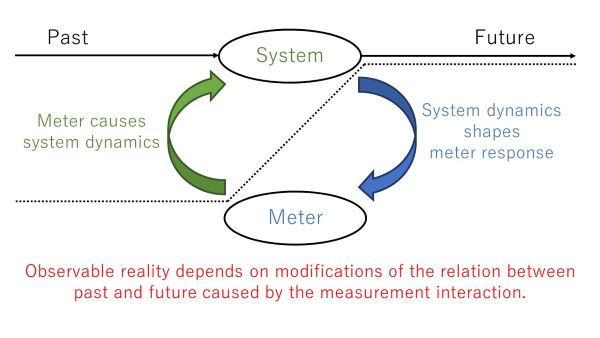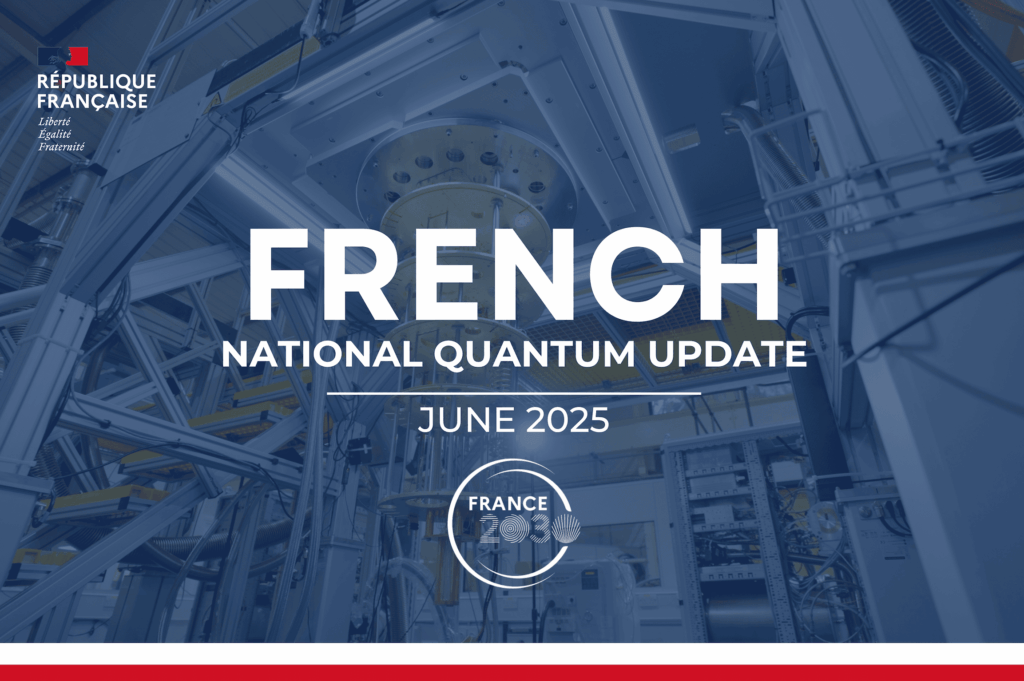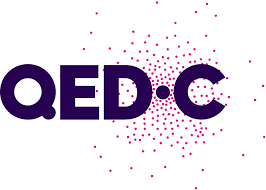Insider Brief
- Two quantum physicists from Hiroshima University recently analyzed the dynamics of a measurement interaction, one of quantum physics’ many tricky problems.
- Ultimately, the researchers demonstrated that the observable values of a physical system depend on the dynamics of the measurement interaction by which they are observed.
- Critical Quote: “Our results show that the physical reality of an object cannot be separated from the context of all its interactions with the environment, past, present and future, providing strong evidence against the widespread belief that our world can be reduced to a mere configuration of material building blocks.” — Holger Hofmann, professor in the Graduate School of Advanced Science and Engineering, Hiroshima University
- Image: According to quantum theory, measurement results are shaped by the changes in the relation between the past and the future of a system caused by the measurement interaction. (Tomonori Matsushita and Holger F. Hofmann, Hiroshima University)
PRESS RELEASE — Whenever the precision of a measurement approaches the uncertainty limit defined by quantum mechanics, the outcomes of the measurement depend on the dynamics of the interactions with the meter used to determine a physical property of the system. This finding may explain why quantum experiments often produce conflicting results and may contradict basic assumptions regarding physical reality.
Two quantum physicists from Hiroshima University recently analyzed the dynamics of a measurement interaction, where the value of a physical property is identified with a quantitative change in the meter state. This is a difficult problem, because quantum theory does not identify the value of a physical property unless the system is in a so-called “eigenstate” of that physical property, a very small set of special quantum states for which the physical property has a fixed value. The researchers solved this fundamental problem by combining information about the past of the system with information about its future in a description of the dynamics of the system during the measurement interaction, demonstrating that the observable values of a physical system depend on the dynamics of the measurement interaction by which they are observed.
The team published the results of their study on July 31 in Physical Review Research.

“There is much disagreement about the interpretation of quantum mechanics because different experimental results cannot be reconciled with the same physical reality,” said Holger Hofmann, professor in the Graduate School of Advanced Science and Engineering at Hiroshima University in Hiroshima, Japan.
“In this paper, we investigate how quantum superpositions in the dynamics of the measurement interaction shape the observable reality of a system seen in the response of a meter. This is a major step towards explaining the meaning of “superposition” in quantum mechanics,” said Hofmann.
In quantum mechanics, a superposition describes a situation in which two possible realities seem to co-exist, even though they can be distinguished clearly when an appropriate measurement is performed. The analysis of the team’s study suggests that superpositions describe different kinds of reality when different measurements are performed. The reality of an object depends on the object’s interactions with its surroundings.
“Our results show that the physical reality of an object cannot be separated from the context of all its interactions with the environment, past, present and future, providing strong evidence against the widespread belief that our world can be reduced to a mere configuration of material building blocks,” said Hofmann.
According to quantum theory, the meter shift that represents the value of the physical property observed in a measurement depends on the dynamics of the system caused by the fluctuations of the back-action by which the meter disturbs the state of the system. Quantum superpositions between the different possible system dynamics shape the meter response and assign specific values to it.
The authors further explained that the fluctuations in the system dynamics depend on the strength of the measurement interaction. In the limit of weak interactions, the fluctuations of the system dynamics are negligibly small and the meter shift can be determined from the Hamilton-Jacobi equation, a classical differential equation expressing the relation between a physical property and the dynamics associated with it.
When the measurement interaction is stronger, complicated quantum interference effects between different system dynamics are observed. Fully resolved measurements require a complete randomization of the system dynamics. This corresponds to a superposition of all possible system dynamics, where quantum interference effects select only those components of the quantum process that correspond to the eigenvalues of the physical property. Eigenvalues are the values that textbook quantum mechanics assigns to measurement outcomes – precise photon numbers, spin up or spin down, and so forth. As the new results show, these values are a result of the complete randomization of the dynamics. Different values need to be considered when the system dynamics is not completely randomized by the measurement.
Interestingly, this observation provides a new perspective on the use of measurement outcomes in descriptions of reality. It is common to assume that localized particles or integer spin values are measurement independent elements of reality, but these research results suggest that these values are only created by quantum interferences in sufficiently strong measurements. Our understanding of the meaning of experimental data may be in need of a fundamental revision.
Hofmann and his team look forward to further clarifying the contradictory results observed in many quantum experiments. “Context-dependent realities can explain a wide range of seemingly paradoxical quantum effects. We are now working on better explanations of these phenomena. Ultimately, the goal is to develop a more intuitive understanding of the fundamental concepts of quantum mechanics that avoids the misunderstandings caused by a naive belief in the reality of microscopic objects,” said Hofmann.
Tomonori Matsushita from the Graduate School of Advanced Science and Engineering at Hiroshima University in Hiroshima, Japan also contributed to this study.
This work was supported by JST Grant Number JPMJFS2129.
For more market insights, check out our latest quantum computing news here.
















